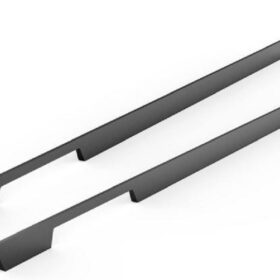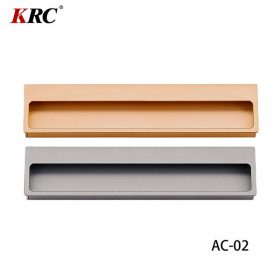Safety Considerations with Aluminum Alloy Handles
Aluminum alloy handles are ubiquitous in various industrial and consumer products, from tools and cookware to sports equipment and automotive parts. While this lightweight and durable material offers numerous advantages, it also presents potential safety risks that must be carefully considered.
Electrical Hazards:
Aluminum alloys are excellent conductors of electricity, posing a significant risk of electrical shock if not handled properly. Insulated handles or appropriate safety measures, such as grounding and proper wiring, are crucial to prevent accidental contact with live electrical components.
Mechanical Failures:
Aluminum alloys can fail under excessive loads or improper use. Cracked or weakened handles can lead to catastrophic accidents, particularly in applications involving heavy machinery or high-stress environments. Regular inspections and proper maintenance are essential to ensure the integrity of aluminum alloy handles.
Corrosion and Degradation:
Aluminum alloys are susceptible to corrosion and degradation, especially in harsh environments or when exposed to chemicals. Over time, corrosion can weaken the handle, compromising its strength and safety. Appropriate coatings or surface treatments can help mitigate these risks.
Toxicity:
Aluminum alloys contain trace amounts of heavy metals, including manganese and copper. While generally considered safe, prolonged exposure to high levels of aluminum can have adverse health effects. Proper ventilation and personal protective equipment should be used to minimize inhalation or skin contact, particularly in industrial settings.
Mitigation Strategies:
To address these safety concerns, several mitigation strategies should be employed:
Material Selection: Choose aluminum alloys with appropriate strength and corrosion resistance for the intended application.
Design Considerations: Design handles to minimize stress concentrations and ensure adequate strength.
Surface Treatments: Apply protective coatings or anodic treatments to prevent corrosion and improve wear resistance.
Inspection and Maintenance: Regularly inspect handles for cracks, damage, or signs of corrosion.
Hazard Communication: Provide clear instructions and warnings to users on the proper handling and maintenance of aluminum alloy handles.
By adhering to these safety considerations, manufacturers and users can minimize the risks associated with aluminum alloy handles, ensuring the safe and reliable operation of products and equipment.
-
2024-09-14Exploring the Different Types of Modern Closet Door Pulls and Their Applications
-
2024-09-14How Cabinet Door Pull Handles Support High-Traffic Areas
-
2024-09-06Cost-Benefit Analysis of Investing in High-Quality Long Wardrobe Door Handles
-
2024-09-04How Flat Cabinet Handles Enhance Modern Interior Design
-
2024-11-29Top Trends in Modern Kitchen Cabinet Pulls for 2024
-
2024-11-28The Ultimate Guide to Modern Kitchen Cabinet Pulls- Materials, Styles, and Tips
-
2024-11-27Elevate Your Kitchen Design with These Must-Have Modern Cabinet Pulls
-
2024-11-26Sleek and Stylish- The Best Modern Kitchen Cabinet Pulls for a Contemporary Look






